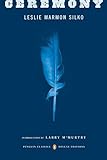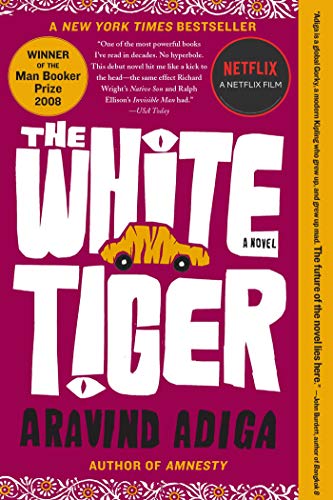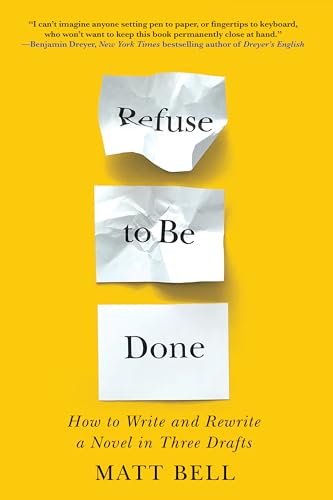Before his recent novel, The Jaguar’s Children, John Vaillant was known for his award-winning, bestselling non-fiction. The Tiger is the story of an Amur tiger that went on a killing spree in the remote Siberian wilderness. His first book, The Golden Spruce, tells the tale of an eco-warrior who chopped down a unique 300- year-old tree. Both follow a strong central conflict through which Vaillant weaves social, political, and historical threads.

 The Jaguar’s Children, Vaillant’s fiction debut, opens with the main character, Héctor Lazaro, trapped in the back of a broken down water truck. He is human cargo, part of a group that is being smuggled over the U.S. boarder from Mexico. The coyotes, the smugglers, have taken money from the group and gone for a mechanic, but as the days roll by it becomes clear that help is not coming. With no way out of the sealed tank, Héctor delivers the story of how he ended up there through a series of messages recorded on a phone.
The Jaguar’s Children, Vaillant’s fiction debut, opens with the main character, Héctor Lazaro, trapped in the back of a broken down water truck. He is human cargo, part of a group that is being smuggled over the U.S. boarder from Mexico. The coyotes, the smugglers, have taken money from the group and gone for a mechanic, but as the days roll by it becomes clear that help is not coming. With no way out of the sealed tank, Héctor delivers the story of how he ended up there through a series of messages recorded on a phone.
Philipp Meyer, author of The Son, calls The Jaguar’s Children “a major social novel.” While confined in setting, the story is shot through with the social, political, and historical dynamics between the U.S. and Mexico that lead up to Héctor’s doomed trip across the border.
While Vaillant’s writing could fall in the “man vs. nature” category, he has said that he sees the need for a shift in our relationship with nature, “from a vertical one of dominance and submission to a horizontal one of co-collaborators.” And it’s this idea that connects his non-fiction to his novel. The Jaguar’s Children shows dislocation between the two cultures, but more significantly it gives enough agency to both sides to show how they are connected. We are all co-collaborators.
By email, I talked to Vaillant about his research, time living in Oaxaca, and the move to fiction.
The Millions: The Jaguar’s Children is written from the perspective of Héctor Lazaro, a young Mexican man from Oaxaca. How did you get inside his head?
John Vaillant: Actually, he got into mine. Seriously, he just came to me in a moment, manifesting with the first lines in the book: “Hello, I’m sorry to bother you, but I need your assistance.”
It was immediately clear, over the course of a few minutes, that he was communicating through a cellphone (a device I do not possess), that he was on the border, that he was trapped inside a water truck, and that he was in deep distress. This was strange enough and strong enough that I wrote it all down.
TM: The voice just came?
JV: After that, it was really a collaboration between his personal history and experience and mine. In that sense, we kind of shared a heart and mind. This is my first novel, so this process of conjoining with a non-existent person is still new and strange to me.
What helps make it convincing, I think, is that I was there in Oaxaca for a year, and I saw, heard, felt, and learned a lot about what life is like there right now for a guy such as Héctor. This enabled me to put him in very authentic situations, many of which I’d experienced personally (like the accidental encounter with the corrupt and murderous governor of Oaxaca), and it allowed me to bring the same authority to the scene that I would deploy in nonfiction.
The big difference is that it’s in Héctor’s voice and from his unique point of view, which, I hope, gives it a more spontaneous, human feel and sound.
TM: In The New York Times, Roxane Gay said that when a writer of one race or ethnicity writes about people of another race or ethnicity, it requires empathy, “an ability to respect the humanity of those you mean to represent.” Is it all about empathy?
JV: Empathy is what gives you the access. I see the writer (fiction or nonfiction) as a kind of permeable membrane through which the thoughts, feelings, and experiences of others can pass and manifest. I recently learned about “mirror touch synaesthesia,” a condition that allows (or compels?) you to physically feel what others are feeling — from an alcohol buzz to a slap in the face. I think writers have this also, to varying degrees.
In my case, it’s a combination of being able to go through my own palette of psycho-physico-emotional experience and find the one that’s most appropriate to the character and context, and of simply imagining, based on research and experience, what a given situation would feel like; e.g., having a jaguar watch you while you’re swimming.
TM: So a writer needs more than empathy?
JV: You also need a deep curiosity about the Other. This is what provides the detailed understanding of the conditions under which your characters live, and the history — personal and social — that informs their responses. I cannot completely rule out channeling either: as a non-fiction writer, I can’t tell you how strange it is to be rendering characters I’ve never met or seen before in my life. Which brings us back to that membrane: things outside you, independent of you, are passing through you, and you are metabolizing and refracting them. In that sense, it’s a collaborative enterprise.
TM: You lived in Oaxaca, where Héctor is from, for a year. Is that how you got the idea for his character and the story?


 JV: In a lot of ways Héctor feels like a culmination of influences. In 2009-10, I was living in Oaxaca City with my family, finishing up The Tiger, and all I really wanted to do when I finished was to lie in a hammock and read books that had no tigers in them. Then, a visitor left behind a copy of Aravind Adiga’s The White Tiger, which I read, in spite of myself, and really enjoyed. I was struck by how similar Adiga’s rural, low-caste narrator’s situation and yearning were to that of many indigenous Mexicans, and I wondered if anyone had written a Mexican migration story in this way. Then, I thought to myself, if I can’t find one like it, maybe I’ll write it myself.
JV: In a lot of ways Héctor feels like a culmination of influences. In 2009-10, I was living in Oaxaca City with my family, finishing up The Tiger, and all I really wanted to do when I finished was to lie in a hammock and read books that had no tigers in them. Then, a visitor left behind a copy of Aravind Adiga’s The White Tiger, which I read, in spite of myself, and really enjoyed. I was struck by how similar Adiga’s rural, low-caste narrator’s situation and yearning were to that of many indigenous Mexicans, and I wondered if anyone had written a Mexican migration story in this way. Then, I thought to myself, if I can’t find one like it, maybe I’ll write it myself.
At the time, this was an idle and audacious proposition, but the thought had been articulated, and the genie was out of the bottle. Meanwhile, we’d been touring around rural Oaxaca on a regular basis, meeting people and seeing many slices of life — from ritual dances to heavily armed federal police. I’d also been seeing a lot of water trucks, and had wondered about their smuggling possibilities. It was a couple of weeks after finishing The White Tiger, in January 2010, that Héctor announced himself. In a way, Adiga’s book (along with Leslie Marmon Silko’s Ceremony, and John le Carré’s The Constant Gardener) was the catalyst of something that had been slowly building for years.
TM: How did your experience of living in Mexico find its way into the novel?
JV: That’s a complicated question because Mexico has been impacting me for my entire life. Three generations of my father’s family lived down there during the first half of the 20th century, and I grew up surrounded by Mexican art and artifacts, and also by family stories of that time. Then, starting in the ’80’s, I began making exploratory trips to the border states and into Mexico. I found it incredibly compelling, and one of the first serious nonfiction pieces I ever attempted in university was about a catastrophic semi-truck accident I witnessed in Chihuahua, which I revisit in the book through Héctor’s five-year-old eyes.
Likewise, I’ve included an archaeologist because that’s what my grandfather, a mysterious and tragic figure in our family, was doing in Mexico. So, there are all these layers of influence and experience that inform the characters and plot. With the exception of the jaguar episodes and events inside the water tank, I personally witnessed, or heard firsthand, virtually everything that happens in the book.
TM: Much of the novel takes place with Héctor trapped inside the sealed tank of a water truck. A limited setting puts pressure on the character, but it also puts pressure on the writer. I’m interested in the process involved in filling out the story. How did you make a novel out of the inside of a water tank?
JV: Well, it was the challenge Héctor set for me: that’s where he was calling from and I had to deal with it. That said, a novel set entirely inside a damp, dark tank was simply not possible by my lights. So, I had to explore Héctor’s attempts to escape, physically and mentally. I knew also that it would be unbearable to readers if there was no relief, so it became a question of rhythm and modulation — inside and outside, pressure and release. This, the pacing, was the hardest part for me.
 TM: As I read your book, I kept thinking of The Devil’s Highway, a devastating true story of Mexican migration by Luis Alberto Urrea, which you cite as a reference. A line from that book hits at the crux of Héctor’s predicament, “They’d walked into hell trying to escape the Border Patrol, and now they were praying to get caught.” How can we let this situation continue? How can we be so cruel?
TM: As I read your book, I kept thinking of The Devil’s Highway, a devastating true story of Mexican migration by Luis Alberto Urrea, which you cite as a reference. A line from that book hits at the crux of Héctor’s predicament, “They’d walked into hell trying to escape the Border Patrol, and now they were praying to get caught.” How can we let this situation continue? How can we be so cruel?
JV: It’s much easier to be cruel when you don’t identify, when you “Other” and label a group of people. The U.S. (and Mexico) are extremely racist countries, and many people find strength and purpose in identifying themselves as different, exceptional, chosen, entitled, etc. Many Latin American immigrants could tell us stories like Héctor’s, if we took the time to listen to them. The trouble is, if we did, and we really took these stories in, it would be much harder to rationalize the billions of dollars spent “securing the border” against a conveniently faceless menace.
TM: In some ways, Héctor shows a form of cruelty too. He makes choices that mean he might survive while others die. Why did you decide to portray him this way?
JV: It arose organically out of the situation inside the truck; limited water and ventilation have a way of simplifying one’s objectives. In many ways, this is an accidental rite of passage for Héctor who has always been somewhat passive and heavily influenced by the ideas of those around him — his grandfather, father, mother, and his friend Cesar, among others. But in the truck, with Cesar incapacitated and no reliable allies, Héctor has to fend for himself. He has to draw deeply from his internal resources and decide if his life is worth living, and therefore worth saving. It’s a kind of ultimate test that Fate has presented him with.
For some reason, I seem to be drawn to untenable situations where the principals face impossible choices. In all three of my books, the characters have been backed into corners of one kind or another, and the story is how they get out, or don’t.
TM: Speaking of sources, you are well known for your nonfiction. This novel feels equally well researched, but is there a difference in how the research works its way in to your fiction?
JV: As I see it, accuracy is a measure of your respect for your subject and for your audience. The issues that arise in The Jaguar’s Children are real, current, and pressing so it would be irresponsible and insulting to get the basics wrong. However, because this is a work of fiction, I researched just enough to achieve a feeling of authenticity, but not so much that it constrained the characters or the plot.
TM: In an interview, you said, “a novel comes from a different place.”
JV: It depends on what kind of novel you’re writing. If you’re writing Jack Reacher novels, I’m guessing it comes from a pretty intellectual and premeditated place: you’re making a product that can be replicated.
In the case of The Jaguar’s Children, it was more like a guided hallucination informed by nightmares, fantasies, personal experiences, and current events, along with a vast assortment of memories and emotions recovered, not only from my own heart and consciousness, but from those around me, and from every other source I have at my disposal (one of Héctor’s hallucinations is an ad I saw in the London tube).
In short, that “different place” that novels come from (in my case, anyway), is everywhere — inside and out: you are assessing and then ransacking the full catalog of your experience.













